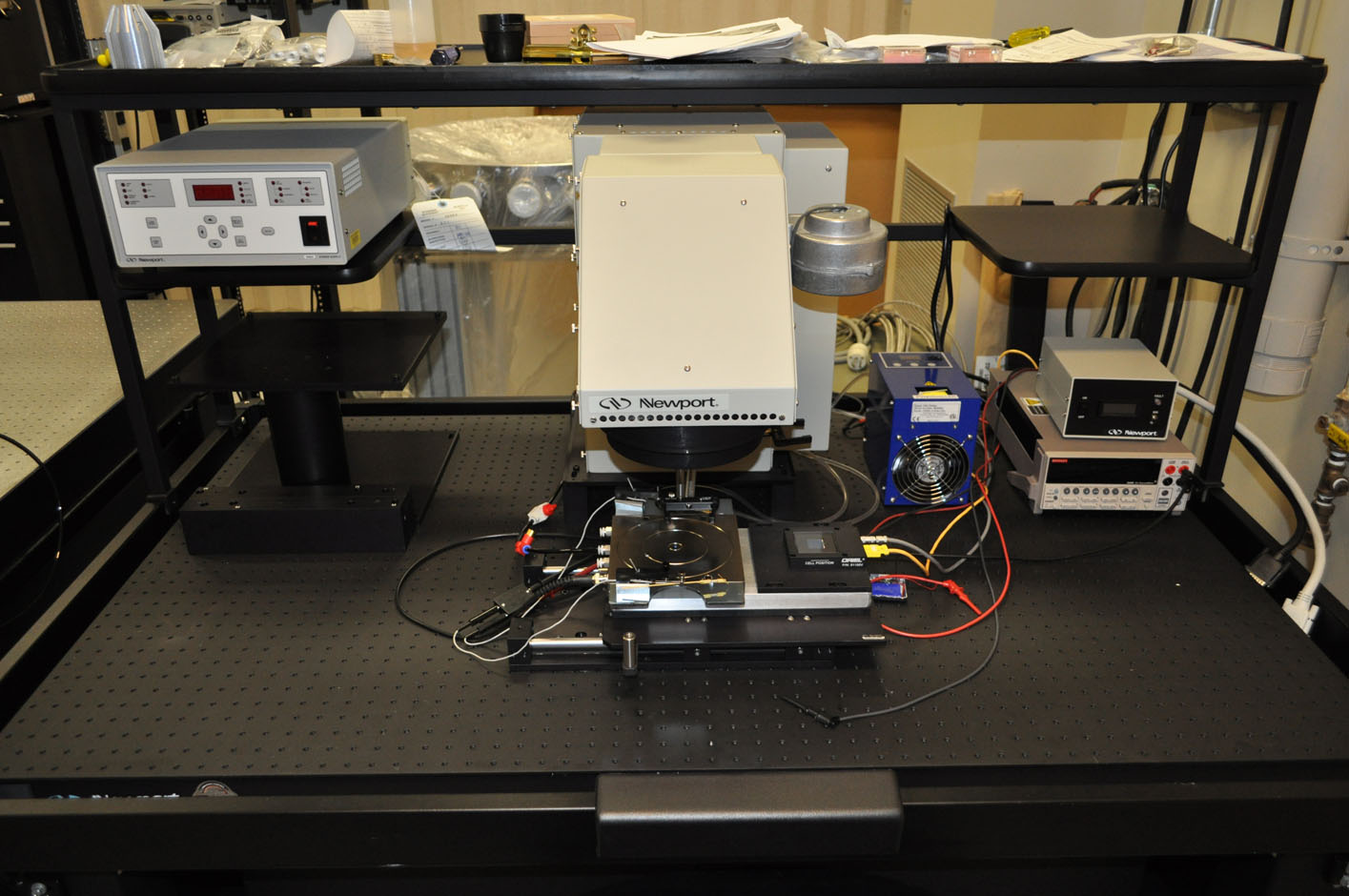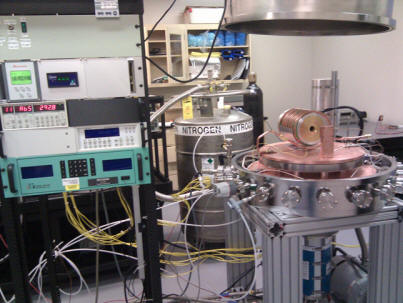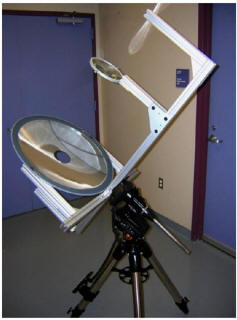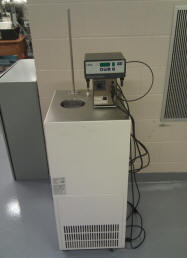| FACILITIES
Our main laboratory at The Science and
Technology Center at Tufts University includes 4 rooms of
class 10,000 clean space as well as 1 room of class 100
space. We also have lab space at the Tufts Micro and
Nano Fabrication Facility at 200 Boston Ave.
Deposition:
Ion Beam Sputter System
|
 |
This sputter system has been refurbished by John Chivers and
is capable of depositing many different materials. We use
it primarily for deposition of contacts such as transparent
conducting oxides (TCOs) such as Indium Tin Oxide (ITO) or
Titanium Dioxide (TiO2) or more traditional contacts
such as gold. |
Processing:
Chemistry Fume Hood (3)
|
 |
We have three chemistry fume hoods at our disposal, each 5
feet wide. |
HEPA Hood
|
 |
This horizontal laminar flow station is over 6 feet wide and
is primarily used for wafer and sample prep. All air
inside the hood is run through HEPA filters to remove
particulate airborne contamination thus keeping the samples
inside clean. Also attached
is a nitrogen gas blower. |
Characterization:
Solar Simulator
|
 |
This Oriel Solar Simulator from Newport Corporation is
complete with probe station, cooling stage, vacuum sample
holder, light intensity monitor, filter holders, and
source-meter. It is capable of using several different
bulbs up to 1600W to provide almost 14 suns of illumination.
We use this to generate I-V curves for solar cells in order to
determine their operating parameters. |
"CryoSim" Cryogenic Thermal Simulator
|
 |
The CryoSim is used to test the conversion efficiency of low
temperature Thermophotovoltaics (TPV) operating in the infrared
with wavelengths greater than 7um. The tester consists of
a liquid nitrogen cooling system, temperature controlled sample
stage, high vacuum chamber, and blackbody radiation source. |
Mid-Range Thermal Simulator
|
 |
The Mid-Range Thermal Simulator is used to test
thermophotovoltaic cells in atmosphere. It consists of a
blackbody radiator with a range of 50 to 1050°C. Glycol
cooling is used to keep the sample from overheating. |
High Temperature Blackbody Radiator
|
 |
The High Temperature Blackbody Simulator is used to test
thermophotovoltaic cells in atmosphere. It consists of a
blackbody radiator with a range of 500 to 3000°C. Water
cooling is used to keep the sample from overheating. This
setup can also be used to test the emissivity properties of
materials at high temperatures. |
Split Junction Solar Concentrator
|
 |
The split junction concentrator is used to test how
photovoltaics and thermophotovoltaics work when used together
with a dichroic filter to separate the incident solar radiation
into visible and infrared sections which are then focused onto
the PV and TPV cells respectably. |
Photoluminescence
|
 |
The PL setup has a Helium Neon (HeNe) laser with wavelength
(632.8nm), and a violet diode laser at 405nm. A cryostat
is incorporated to test samples at low temperatures. |
Thermal Bath Temperature Regulator
|
 |
The Thermal Bath Temperature Regulator can maintain a liquid
at a specified temperature. It integrates a heater,
chiller, and circulation pump and can operate over a wide
temperature range depending on the liquid in use. This
equipment is used to test the energy harvesting properties of
TPV devices while submerged in a liquid. |
We also have immediate access to shared facilities in the building
including, X-ray diffractometers (XRD), Variable Angle Spectroscopic
Ellipsometer (VASE), Fourier Tranxform Infrared Spectroscopy (FTIR).
Storage:
Wafer Storage
|
 |
This is a nitrogen dry-box which we use to store wafers and
samples. |
Nitrogen Generator
|
 |
This is a nitrogen generator which separates the nitrogen
from the air for use in the dry-box and HEPA hood.. |
| |








